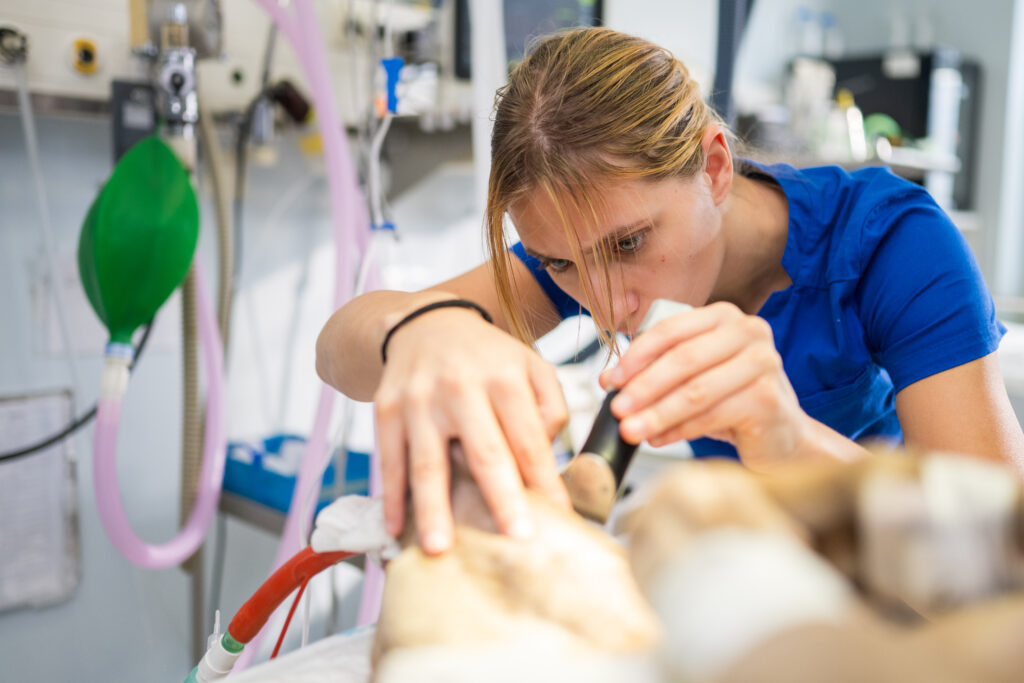This article originally appeared in the Summer 2025 issue of EquiManagement. Sign up here for a FREE subscription to EquiManagement’s quarterly digital or print magazine and any special issues.

While the equine veterinary industry faces continuing difficulty attracting and keeping veterinarians in equine practice, new entrants are often discouraged and wary before they even experience practice life. “Horse girls” might understand the lingo, the wide variety of horse sports, and the elitism that often pervades the industry. But all this can feel like an unfriendly foreign country to new graduates unfamiliar with the industry. Even a student who grew up with Standardbred racehorses might be completely lost in the world of dressage or rodeo, and vice versa. The horse industry is fragmented into sectors that differ greatly from one another. What’s important to remember and to teach is that horses are horses, because regardless of their sporting use, their physiology and anatomy are the same.
During their time as students, many aspiring equine doctors are warned against the career, both by faculty and equine practitioners with whom they interact. The long hours, lifestyle, after-hours emergency coverage, and low compensation lead well-meaning professionals to steer talent away from the field. More than one veteran horse doctor has said, “I wouldn’t want my son or daughter to choose this career.” More than one son or daughter has watched a parent pounding it out year after year and decided they wanted more from life. Many an intern has been so depleted by their experience, they leave equine medicine forever.
Instead of this negative approach, every professional concerned about the sustainability of equine practice should champion new approaches and be the change they want to see. Finding our way forward as an industry requires adopting the innovative ideas that are arising. We must be willing to try things outside of our comfort zone to relieve the pain points we currently experience. Brainstorming ways to continue to change traditional equine practice to meet the needs of the future workforce is essential, ongoing work. Embracing this necessary change requires stepping into uncomfortable territory, which is never easy.
Veterinary students, interns, and new graduates need support and mentoring of a type that is different from the past. Assistance developing professional competencies must replace the hazing, shaming, and diminishing of early-career professionals. Most students, from their elementary years onward, are being taught with competency-based education, so they expect feedback that focuses on what went well, what can go better the next time, and what they need to focus on to improve.
“They expect help to improve,” said Emma Read, DVM, MVSc, DACVS, Associate Dean for Professional Programs at The Ohio State University’s College of Veterinary Medicine. “It’s important to learn these new ways to communicate and mentor, because from kindergarten through high school and into college, feedback in competency is the new way.”
The industry needs flexibility, family-friendly cultures, shorter workweeks, better boundaries, collaborative emergency services, and competitive salaries. Capturing all revenue, improving efficiency, and setting higher fees can help support these changes. In addition, better support and mentoring for students and new graduates, improved internships, and client education about the industry’s challenges are necessary. Fostering connection and belonging, minimizing injury, and modifying restrictive covenants are also important. Together, we can build a better, more satisfying life for the next generation of equine practitioners.
Related Reading
- Equine Veterinary Sustainability: Explaining Compensation Packages to New Hires
- Guiding the Next Generation: Mentorship in Equine Veterinary Practice
- Understanding the Next Generation of Veterinarians
Stay in the know! Sign up for EquiManagement’s FREE weekly newsletters to get the latest equine research, disease alerts, and vet practice updates delivered straight to your inbox.








